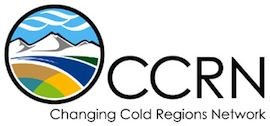Theme B: Improved Understanding and Diagnosis of Local-Scale Change
Theme Lead: John Pomeroy (University of Saskatchewan)
Overview
Theme B improves our knowledge of local-scale change by developing new and integrative knowledge of Earth system processes, incorporating these processes into a suite of process-based integrative models, and using the models to better understand Earth system change. Regional-scale processes and interactions are addressed in Theme D. The work uses a unique legacy of process observations and modelling at long-term WECC observatories to answer the following science questions: 1) how have interacting Earth system processes changed in response to changing climate, 2) how can fine-scale process models be improved to better diagnose key factors governing change, and 3) what are the interactions amongst climatic, hydrological, ecological, and cryospheric drivers, processes and feedbacks, and thresholds leading to system changes at local scales?
Work Package Descriptions
B1 Targeted Process Studies
This work package carries out targeted process studies at the WECC observatories to develop the fundamental process-based knowledge need to improve our hydro-ecological models in order to understand past changes and predict future integrated response of cold climate systems to warming and increased precipitation variability. Studies focus on critical components that link the climate, vegetation structure and hydro-climatic function, snow/ice, surface-atmospheric fluxes, surface/subsurface water storage and runoff.
Description of Activities & Milestones:
B1.1 Deployment of Enhanced Field Instrumentation (anticipated completion by April, 2014): Deploy enhanced field instrumentation such as wind and snow/vegetation LiDAR, radiosonde, eddy correlation, SODAR, scintillometers, GPR, profiling microwave radiometers, 3-D snow acoustic sounders, and cosmic ray at the WECC study sites.
B1.2 Compilation of Targeted Process Studies Data (anticipated completion by April, 2016): Compile targeted process study data on glacier energetics, permafrost thaw, tundra and forest vegetation change and basin response to atmospheric warming, changing precipitation, glacier retreat, changing vegetation and changing water storage.
B1.3 Development of Enhanced Local-Scale Process Understanding (anticipated completion by April, 2016): Use compiled data to develop enhanced local-scale process understanding of changes in atmospheric, ecosystem, cryosphere and hydrological structure and function including implications for changes to surface-atmosphere fluxes.
B2 Development of Improved Local-Scale Models
This work package utilizes the improved process understanding from B1 to further develop and parameterize the local-scale process models needed to interpret and represent the fine-scale data from our WECC observatories, i.e., applicable at plot, hillslope, and small catchment scale. A particular focus is on development of the Cold Regions Hydrological Model (CRHM) modelling system, which operates on a hydrological response unit level of landscape aggregation that is compatible with larger scale models in Theme C.
Description of Activities:
B2.1 Development of Improved Local-Scale Models (anticipated completion by April, 2016): Development of improved local-scale models by improving process understanding and parameterization of fine scale models such as ISNOBAL, DBSM, GeoTOP, ForSAFE-Veg to develop, parameterize and implement improvements to meso-scale models such as CRHM.
B2.2 Testing of Improved Local-Scale Models (anticipated completion by April, 2016): Testing improved local-scale models to represent processes, coupled system behaviour and feedbacks under environmental change and support improved parameterizations on the basin-scale at the WECC study sites using enhanced observations.
B3 Diagnosis of Local Past Change
This work package uses advanced methods of model analysis to test for parameter and process non-stationarity within a statistical framework for uncertainty analysis. Model runs, supported by data assimilation using surface and remotely sensed variables, are used to analyze and diagnose complex interrelationships between climate, vegetation, snow, glaciers, permafrost (in the northern zones), land management, surface-atmosphere fluxes and runoff. Sensitivity analysis, including eco-hydrological feedbacks, are considered between key components of the system.
Description of Activities:
B3.1 Methodology and Toolkit Development (anticipated completion by April, 2015): Methodology and toolkit development to assess Earth system change by data analysis, assimilation and basin-scale modelling including analysis of parameter and process non-stationarity and sensitivity analysis to changing boundary conditions
B3.2 Application of Existing Models to Diagnose Change (anticipated completion by April, 2016): Application of existing models to diagnose change, using both fine- and meso-scale models to determine whether recent or expected changes cross tipping points in system behaviour and system changes in the near future
B3.3 Application of Improved Models to Diagnose Change (anticipated completion by April, 2017): Application of improved models to assess change, using improved CRHM and other meso-scale models to determine whether recent or expected changes cross tipping points in system behaviour in the near future .
